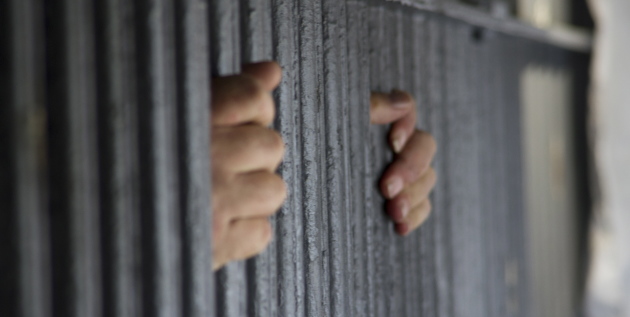
Policy Background:
Texas spends billions of dollars every year incarcerating individuals for offenses that are punished more harshly than necessary. For instance, individuals can receive up to two-year sentences for possessing less than a gram of a controlled substance, repeated prostitution offenses, and property crimes involving outdated monetary thresholds.
Texas policy-makers should reclassify certain nonviolent misdemeanor and felony offenses, which will increase the likelihood that individuals are placed on probation (rather than incarcerated). This will enable more individuals to access community-based services while holding them accountable for meeting strict requirements, including victim restitution. Rigorous supervision will help to lower recidivism rates, and the penalty reclassification can eliminate the barriers to employment and housing that generally accompany a felony conviction. (See bill language for full list of offenses to be reduced.)
Key Facts:
- In the 2011-2012 biennium, 16,262 individuals were sentenced to state jail for a drug conviction[1]—of these, 88% were convicted of possession less than a gram of a controlled substance without the intent to deal or distribute.[2]
Michael McSpadden, a Republican and longtime district court judge in Harris County, believes that harsh drug possession penalties should be reduced. McSpadden and 11 fellow Harris County judges sent a letter to the chairman of the Senate Criminal Justice Committee saying that “the public has realized that draconian punishment of minor drug offenses as state jail felonies is not working, and as judges, we hear countless complaints from trial juries and grand juries who do not believe these cases should be tried as felonies.”[3]
Personal-use level drug possession should be dealt with at the local, misdemeanor level, utilizing strong probation methods instead of continuously cycling individuals through brief state jail terms without post-release supervision.
- The monetary ranges of dollar amounts that apply to property offenses, including criminal mischief, graffiti, and theft, have not been changed since 1993 and therefore fail to reflect more than two decades of inflation. What amounted to a Class A misdemeanor 20 years ago may now constitute a state jail felony—a de facto “criminal inflation” that was not intended by the authors of the 1993 legislation.
Today, property-related crimes comprise nearly 13% of the population in prison and 50% of the population in state jail facilities, with burglary and larceny representing the top property offenses (84% of all property offenses in prison and 70% of all property offenses in state jail facilities).[4] Individuals in prison who have been convicted of property crimes cost taxpayers more than $918,000 per day to incarcerate and more than $335 million annually, while individuals in state jails who have been convicted of property crimes cost taxpayers nearly $250,000 per day to incarcerate and almost $91 million annually.[5]
Individuals serving sentences that are disproportionate to the value of the property damaged is costly to taxpayers, depletes resources that can be directed towards individuals who pose a high risk to public safety, and further burdens jails and prisons.
- Almost all individuals convicted of prostitution share many common characteristics, among them substance abuse, mental illness, homelessness, and, above all, a history of sexual abuse and profound trauma. The 2001 legislation [HB 460] that made prostitution a felony offense in Texas has not helped to keep the public safe, which is the philosophical foundation of our criminal laws, nor has it addressed victimization. In fact, keeping prostitution a felony has only served to drive those who are trapped in prostitution further into the shadows while allowing those who solicit prostitution to go unpunished.
- Probation is far less expensive than incarceration, costing the state only $1.63 per person per day.[6] And it is often more effective at addressing addiction and mental illness than incarceration: individuals on probation frequently have more access to drug treatment and mental health services than those incarcerated, and treatment programming results in lower levels of re-offending than strict incarceration.[7]
- Probation conditions, which vary by judge and offense, typically require regular reporting to a probation officer, fee payments throughout the course of the probation term, full payment of court costs and fees, community service, meeting all mandated class or program obligations (e.g., class or program attendance, drug testing, etc.), school or employment attendance, abiding by restrictive conditions (e.g., curfews, drug and alcohol abstinence, avoidance of negatively influential peers or locations), and remaining law-abiding during the course of the probation term; depending on the offense, probation conditions may also require victim restitution. It is incumbent upon each probationer to ensure all conditions are met, making this a highly rigorous and regulated period under supervision.
Bill Number:
- Bill Number: HB 3326 (Senfronia Thompson, Dutton)
Bill Caption: Relating to decreasing the punishment for certain criminal offenses.
TCJE Materials: Fact Sheet | Testimony | Comparative Chart | CSHB 3326 Comparative Chart
Hearing Notice: House Criminal Jurisprudence Committee, Notice of Public Hearing on April 8, 2015
Archived Hearing Video: House Criminal Jurisprudence Committee, 04/08/15 Video [TCJE testimony begins at 03:18:19 and 03:45:53]
[1] Texas Department of Criminal Justice, Statistical Report Fiscal Year 2011, p. 2 (8,176 individuals), and Statistical Report Fiscal Year 2012, p. 2 (8,086 individuals).
[2] Texas Department of Criminal Justice, response to open records request by the Texas Center for Justice and Equity; data available upon request.
[3] Letter from Judge Michael McSpadden of the 209th District Court to State Senator John Whitmire, January 3, 2013; http://www.scribd.com/doc/139764249/Letter-from-Judge-Michael-McSpadden-of-the-209th-District-Court-to-StateSenator-John-Whitmire.
[4] Texas Department of Criminal Justice (TDCJ), Statistical Report: Fiscal Year 2014, pp. 1, 10-11; http://www.tdcj.state.tx.us/documents/Statistical_Report_FY2014.pdf. TDCJ reported a total of 17,053 individuals on hand in prisons and a total of 5,267 individuals on hand in state jails for property offenses.
[5] Legislative Budget Board, Criminal and Juvenile Justice Uniform Cost Report: Fiscal Years 2013 and 2014, February 2015, pp. 4, 6; http://www.lbb.state.tx.us/Documents/Publications/Policy_Report/1440_Criminal_ Juvenile_Justice_Uniform_Cost_Report.pdf. In FY 2014 Texas spent as much as $53.87 per person per day incarcerate one individual in prison and as much as $47.30 to incarcerate one individual in state jail.
[6] Ibid, p. 6.
[7] U.S. Department of Health and Human Services, Substance Abuse and Mental Health Services Association, Center for Substance Abuse Treatment, The National Treatment Improvement Evaluation Study: NTIES Highlights, 1997; http://www.ncjrs.gov/nties97/index.htm. Also see: Dustin Johnson, Ph.D., Community Corrections Facility Outcome Study of FY 2008 Discharges: Texas Department of Criminal Justice-Community Justice Assistance Division: Research and Evaluation, May 2011, pp. 13, 23 (individuals completing residential programs have significantly lower two-year arrest rates and incarceration rates than those who do not complete their program).
